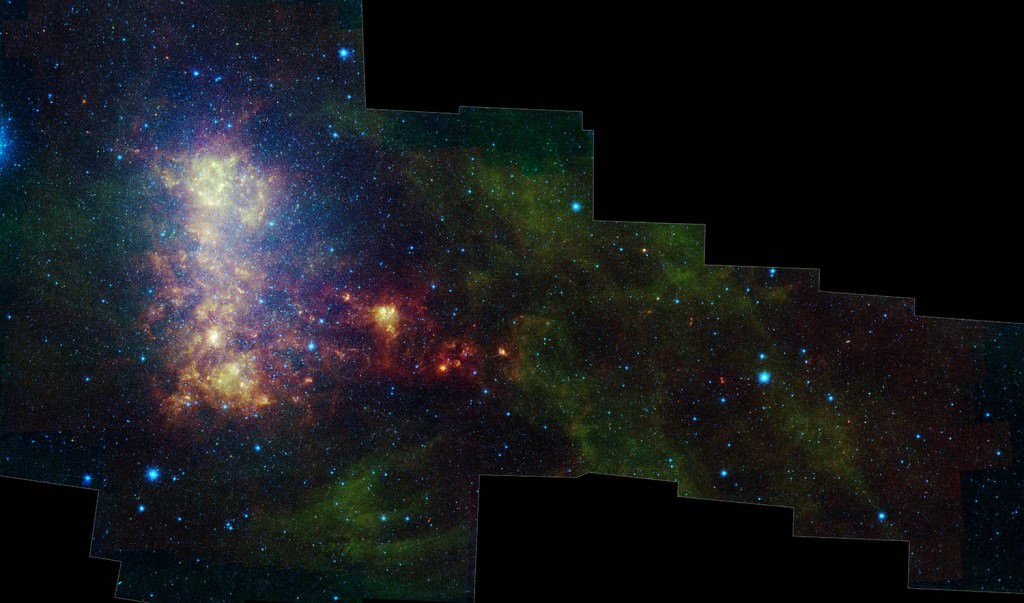Astronomy Jargon 101: Magellanic Clouds
By Paul M. Sutter
In this series we are exploring the weird and wonderful world of astronomy jargon! You’ll only be visible in the southern hemisphere after today’s topic: the Magellanic Clouds!
The Magellanic Clouds are the two largest satellite galaxies of the Milky Way. They appear in the night sky of the southern hemisphere as two fuzzy patches visible to the naked eye. Inhabitants of the southern hemisphere have known about them since basically forever, but they didn’t get the attention of European astronomers until Antonia Pigafetta wrote about them after accompanying Ferdinand Magellan on his circumnavigation of the world.
The Magellanic Clouds look pretty close together, but in actuality they sit about 75,000 light-years away from each other. The larger of the two, appropriately named the Large Magellanic Cloud or LMC, is about 160,000 light-years away from the Milky Way, while the Small Magellanic Cloud (SMC) is about 200,000 light-years away.
The LMC is about 14,000 light-years across, making it roughly twice the size of the SMC, although that’s still tiny compared to the Milky Way, which is over 100,000 light-years across.
Compared to the Milky Way, the two Clouds have a lot more gas and fewer stars. They also lack a lot of elements heavier than helium, since they do not host a lot of star formation. Whatever shape they had when they first formed is long gone, as they’ve been stretched and pulled by the gravitational effects of the Milky Way. That said, radio telescopes have revealed a faint spiral structure in the hydrogen that fills their volumes.
Astronomers have a difficult time estimating the mass of both clouds, but evidence suggests that the LMC is about a tenth as massive as the Milky Way.
The two Clouds are not alone; they are joined by several dozen other dwarf galaxies that orbit the Milky Way.
The post Astronomy Jargon 101: Magellanic Clouds appeared first on Universe Today.

March 18, 2022 at 01:02AM
via Universe Today read more...

Post a Comment